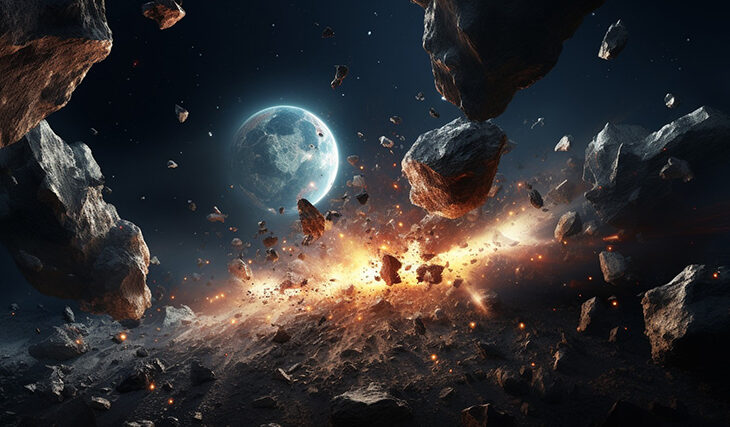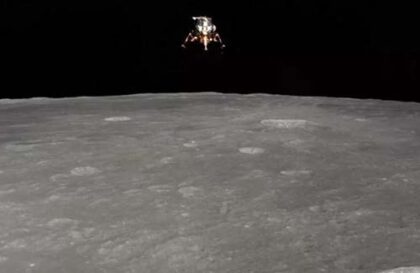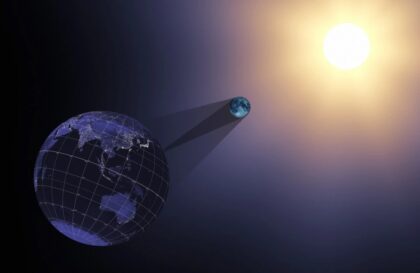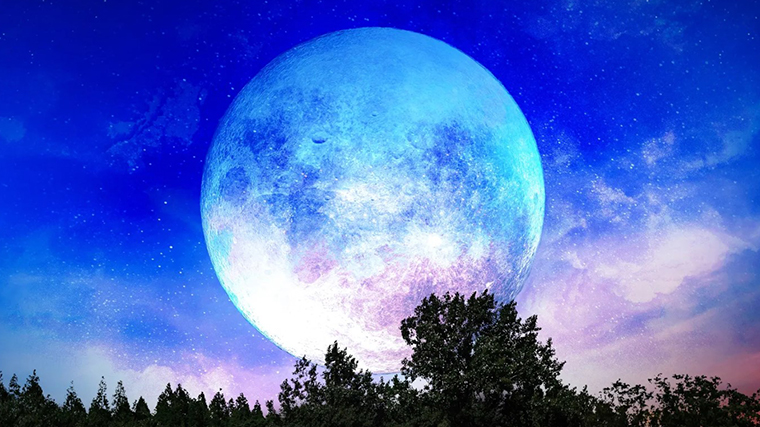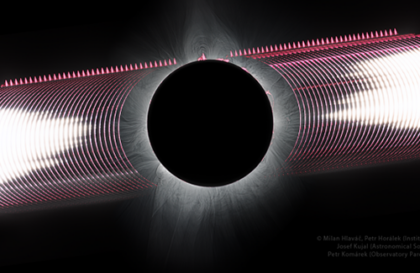Asteroids have knocked The Moon piece by piece out of the Earth for millions of years. The version of the collision with the planet Theia does not work.
One version of the origin of the Moon suggests that it was formed after a collision of the Earth with another large object the size of Mars (the hypothetical Theia). This collision ejected material into space that later created the Moon.
However, this hypothesis does not explain:
- Why is the Moon’s density less than the Earth’s density? If the Moon is part of the Earth in the past, then the density should be approximately the same.
- There are practically no heavy elements on the Moon that should have gotten there due to a powerful impact that captured not only the light surface layers but also.
- There is water on the Moon that should have evaporated from the gigantic energy of the impact event.
Alternative theory
Credit: TS2 / Leokadia Głogulskain, Artificial intelligence
The multi-impact theory assumes that the satellites of planets and asteroids were formed due to multiple collisions with other small space objects, not one large object (planet or giant asteroid).
In these multiple impacts, material from the surface of a planet or asteroid is ejected into space. This material then collects (accretes) around the planet to form moons.
And what is essential is that these satellites have the same direction of rotation as the parent body. Observations of asteroids and their satellites confirm this hypothesis. The formation of the Moon and Mars Phobos and Deimos satellites fits nicely into it.
It also explains why Venus and Mercury do not have satellites. The fact is that bodies with high rotation speeds have a high second escape velocity. This means that in the event of an impact in the direction of rotation of the object, the fragments that bounced off from the impact can fly into orbit and only then be captured by the planet’s gravity. Planets with long days, which rotate around their axis slowly (Venus, Mercury), lack satellites because the ejected material has insufficient speed to enter orbit. It works the same as with a rocket.
If the multi-impact theory is true
Credit: © The Economist
This means there may be more water on the Moon than scientists think. On the Moon, huge lens lakes of water may be under a regolith layer. The author of the hypothesis, Russian physicist Nikolai Gorkavy, who lives and works in the United States, argues that the entire Moon should have water, even at great depths. Ice deposits in the form of permafrost are also possible in the low latitudes of the Moon since regolith will protect them from vacuum and exposure to the Sun. It’s a good news. Lunar missions will be provided with water and oxygen.
The bad news is that objects placed on the Moon can flood the ground with the heat they emit. Therefore, everything related to the placement of lunar modules must be reconsidered.
Is it possible to test the validity of the multi-impact theory?
The proportions of deuterium in the hydrogen atoms of lunar water should resemble those on Earth – very far from both cometary and solar wind proportions. Water brought in by comets contains much more deuterium than water on Earth.
The isotope ratio means that the very first studies of water at the south pole of the Moon will be inexplicable from the point of view of the mega-impact theory (one powerful impact) but will confirm the multi-impact hypothesis.
The first device with such capabilities will reach the Moon as early as 2024: NASA’s VIPER (Volatiles Investigating Polar Exploration Rover, a robot for polar research and studying light elements).
An artist’s concept of the completed design of NASA’s Volatiles Investigating Polar Exploration Rover, or VIPER. VIPER will get a close-up view of the location and concentration of ice and other resources at the Moon’s South Pole, bringing us a significant step closer to NASA’s ultimate goal of a sustainable, long-term presence on the Moon – making it possible to explore Mars and beyond. Credit: NASA/Daniel Rutter
In addition, the Artemis mission will allow us to finally resolve the issue of the isotopic composition of lunar water.
Banner image: Credit: TS2 / Leokadia Głogulskain, Artificial intelligence
Image credit:
https://ts2.space 0
https://www.economist.com
https://www.nasa.gov
